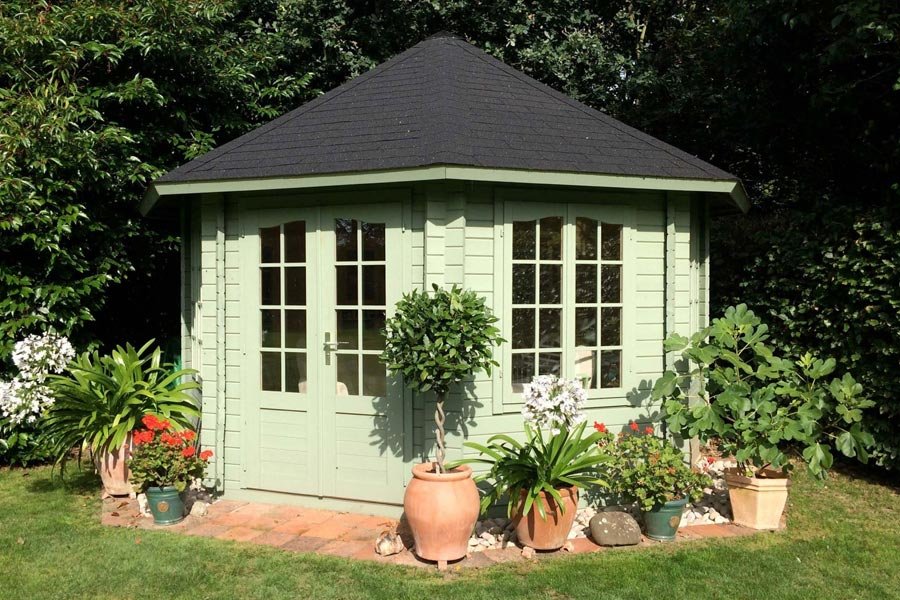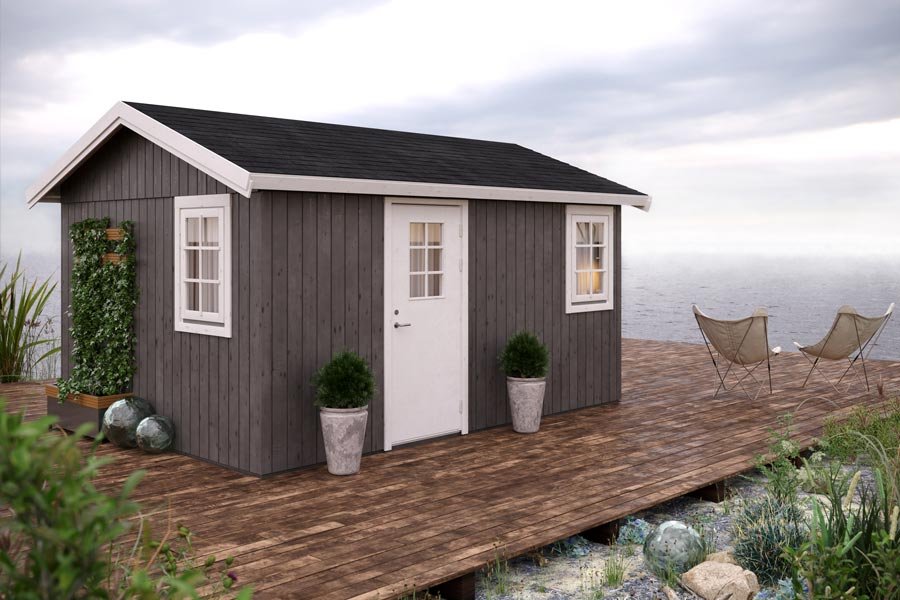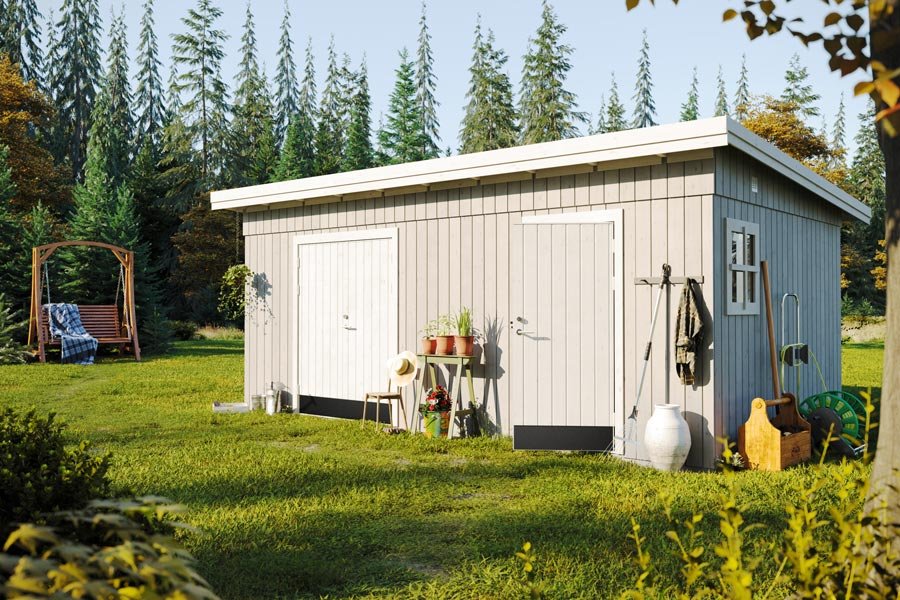
Complaints about the weather are an essential part of the British summer, and in August the post-mortems begin – too much rain, not enough rain, too much wind, and so on. But if your main complaint is wind blighting your summer, spare a thought for your garden. It probably suffered far more from than the wind than you did.
As well as wreaking physical damage, wind causes moisture loss from plants; carries salt from the sea; kills buds and blossom; delays germination and growth and that’s just the start. Given all this – not just the garden damage but also the windswept summer lunches, the blown-over patio pots – it may be a good idea to create a windbreak in your garden. So when it comes to creating a garden windbreak, here are our top tips:
1. Natural wind breaks versus artificial wind breaks
Natural windbreaks include hedges, shrubs or trees, planted in single rows or in three or four staggered rows (for which you will clearly need a bigger space). Artificial versions include fences, walls and the like. The advantage of natural garden windbreaks is that they look more attractive and can be more effective (see point 2 below). The advantage of artificial ones is that you don’t have to wait for them to grow.
2. Let some air through to your garden

Counter-intuitively, the best windbreaks do not try to block wind completely: a semi-permeable windbreak can be more effective than a solid wall or fence. Basically, a solid wall can create eddies of wind and turbulence on its leeward side or even intensify the strength of wind at the wall ends. If you don’t want to look at a wall, and planting a hedge is too much long-term hassle, you could consider trellis with a mix of climbing plants such as ivy, virginia creeper or honeysuckle (of which there are evergreen varieties). The trellis honeysuckle combination is not only a good windbreak, it allows some air into your garden, and in summer your garden will be filled with the most beautiful scent from the flowers.
3. How much wind does a windbreak break?
According to the Royal Horticultural Society, a windbreak can reduce wind on its leeward side for a distance of ten times its height (though there are some more conservative estimates of about eight times height). This should help you plan how tall a windbreak you need, and where it should go.
4. Deciduous or evergreen windbreak?

There’s no right or wrong answer here. Evergreen garden plants are often fast-growing, and can provide wind cover all year around (and privacy, as they don’t drop their leaves). However, some garden experts warn they can become too dense, reducing their effectiveness (because they don’t let enough air through) and also restricting your light or views. A more useful approach is to consider both types, possibly mixing evergreen and deciduous plants together, or go for a mix of native hedging plants to help local wildlife (see point 5).
5. What plants are best for a natural windbreak?
The Royal Horticultural Society says the top five plants for a windbreak are:
- Elaeagnus × ebbingei
- Hawthorn (Crataegus monogyna)
- Italian alder (Alnus cordata)
- Sea buckthorn (Hippophae rhamnoides)
- Small-leafed lime (Tilia cordata)
And what about native hedging plants? If you want to encourage wildlife, birds and other animals to pay a visit to your garden a native windbreak hedge should consist of a mix of the following:
- Hawthorn
- Crab apple
- Field maple
- Hazel
- Beech
- Bird cherry
- Alder
- Holly
- Yew
6. Research your hedge choice carefully
The RHS lists are useful, but a little more investigation is necessary, based on your individual goals and garden. For example, hawthorn windbreaks support many insects and birds, making them wonderful for wildlife gardening. However, they can also harbour a disease called fireblight, which afflicts apple and pear trees – making them not so wonderful for an orchard.
If you do have apple and pear trees needing breeze protection, or even an entire orchard, alder may be your best solution. If you’ve got young kids, you might want to avoid Yew as all parts of it (except the flesh of the berries) are poisonous. It’s these little details about foliage or pests that can make all the difference between the perfect windbreak and the not-so-perfect version.
7. How to get your hedge started
A major drawback of growing a natural windbreak is the difficulties of getting started, especially since the wind will likely batter your young windbreak plants. One garden writer in Ireland talks of using two or three tiers of old tyres to protect her rugosa roses, and then old pallets, as they grew taller. Not pretty at the time, but it worked out well in the end.
Another suggestion is to have a temporary artificial windbreak while the plants grow – perhaps netting or willow hurdles.
8. Consider a fedge or living willow windbreak

A fedge is somewhere between a fence and a hedge, created using two rows of living willow stems. Willow whips (the short willow stems) can be bought online in autumn and planted out straight away. When the willow whips arrive they just look like dead sticks, but there’s no need to worry, all you need to do is stick the end of each whip into the ground and nature will take its course (you don’t even need any compost or rooting powered to help stimulate root growth, they simply grow wherever you plant them). If you already have your own willow tree you don’t even need to buy willow whips – simply cut the most recent growth from the tree in late autumn and poke the cuttings into the ground where you want your fedge to grow (but please note, this technique does not work with weeping varieties).
Whether bought or cut from a tree, the whips can be tied together or, ideally, woven together to provide extra strength. To weave the whips place them roughly 10cm apart and plant them at 45 degrees to each other – for best results plant two rows. You can then effectively create your own living trellis by intertwining the whips along the length of the fedge. If you want a more robust fedge simply plant more rows of willow – they are very malleable so you can create all sorts of shapes, including archways and shelters.

Lastly, the other thing to consider, of course, is that a windbreak can also make your garden look better. Not just because your plants grow better, but because windbreaks can screen the ugly and add structure and interest to a garden design. All in all, they’re much to be recommended, as a way to improve both your garden and your summer lunches al fresco. Why not get one started in time for next summer?
















